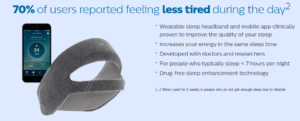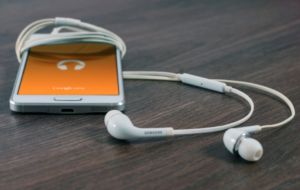Sleep has always been essential to good health, but recently the idea of “sleep hygiene” has really took off. You’ve probably heard the phrase in your favorite healthy lifestyle magazine, but what does it mean? Sleep hygiene refers to habits like turning off electronics an hour before bedtime, sleeping in total darkness, and always going to bed at the same time. Because we live in a technology-obsessed society, companies are jumping on board and releasing all sorts of gadgets designed to help you sleep. What are they and do they actually work?
Aura
If you’re really into collecting data, this sensor is perfect. It goes under your mattress and records your sleeping environment including room temperature, how much light there is, and so on. It also records your body movements, breathing cycles, and heart rate. Aura emits a soothing orange light (which produces melatonin) and “frequencies” that imitate the body’s circadian rhythms. It doesn’t come cheap at $300.
BluBlocker Glasses
Designed for those who just can’t bear to turn off the TV before bed, these glasses are made with colored lenses that block the blue light from la
ptops, phones, and TVs. This helps your body begin the melatonin-production process while you’re still watching TV or reading from your ebook. BluBlockers can also be worn as regular sunglasses.

It may seem weird to wear something on your head while you sleep, but the this headband from Philips actually looks pretty comfortable. It monitors your brain activity while you snooze and supposedly “enhances” your sleep using a pair of speakers that produces audio tones that boost the power of your slow-wave sleep, the deepest sleep a human can be in.
Muse headband
Another wearable, this headband is supposed to “train your brain” to process stress in a healthier way, so falling asleep is easier. With sensors, the headband collects info on your brain activity and sends the data to an app on your phone. The app gives you meditation exercises to calm your level of stress.
A sleep robot
Produced by a Dutch company, the lima bean-shaped Somnox sleep robot is cuddled and helps you monitor your breathing. Its sensors sense when you fall asleep so it can turn off its soothing audio. Why cuddle your sleep gadget? The inventors say physical contact releases sleep-promoting hormones like oxytocin while also providing psychological benefits. It’s expected to be pretty pricey.

Many smart earbuds come with apps
Smart earbuds
These aren’t your grandma’s earbuds. Many have the ability to progressively block out noise while also giving you the option for soothing sounds. There are few options out there, but the most anticipated is Bose, which used crowdfunding. The earbuds have to be charged and there’s an app to go with it.
Nora
If snoring is a problem for you, Nora is here to help. This somewhat-odd gadget is a pillow insert that goes across the whole pillow, so no matter how to sleep, it will work. When you start snoring, the sensor that goes on your nightstand tells the insert to inflate or deflate. This moves your head, stopping your snoring. Except to pay around $300 for Nora.
Are gadgets worth it?
Most of these sleep gadgets are pretty expensive and for a lot of people, unnecessary. It’s much cheaper and easier to just begin a strict sleep-hygiene routine: turn off electronics, wind down an hour before bedtime, always keep your bedroom completely dark, and go to bed and get up at the same time every day, even the weekends. There are also melatonin-producing foods you can try. Tart cherries (and its juice) are considered one of the most effective snacks and have scientific research as backup. If you have the funds to spare and struggle with sleep, go ahead and try one of these sleep gadgets, but make sure you’ve tried the most basic tricks first.
————–
Want more healthy lifestyle magazine tips on sleep? Read this article on natural ways to get better sleep.




